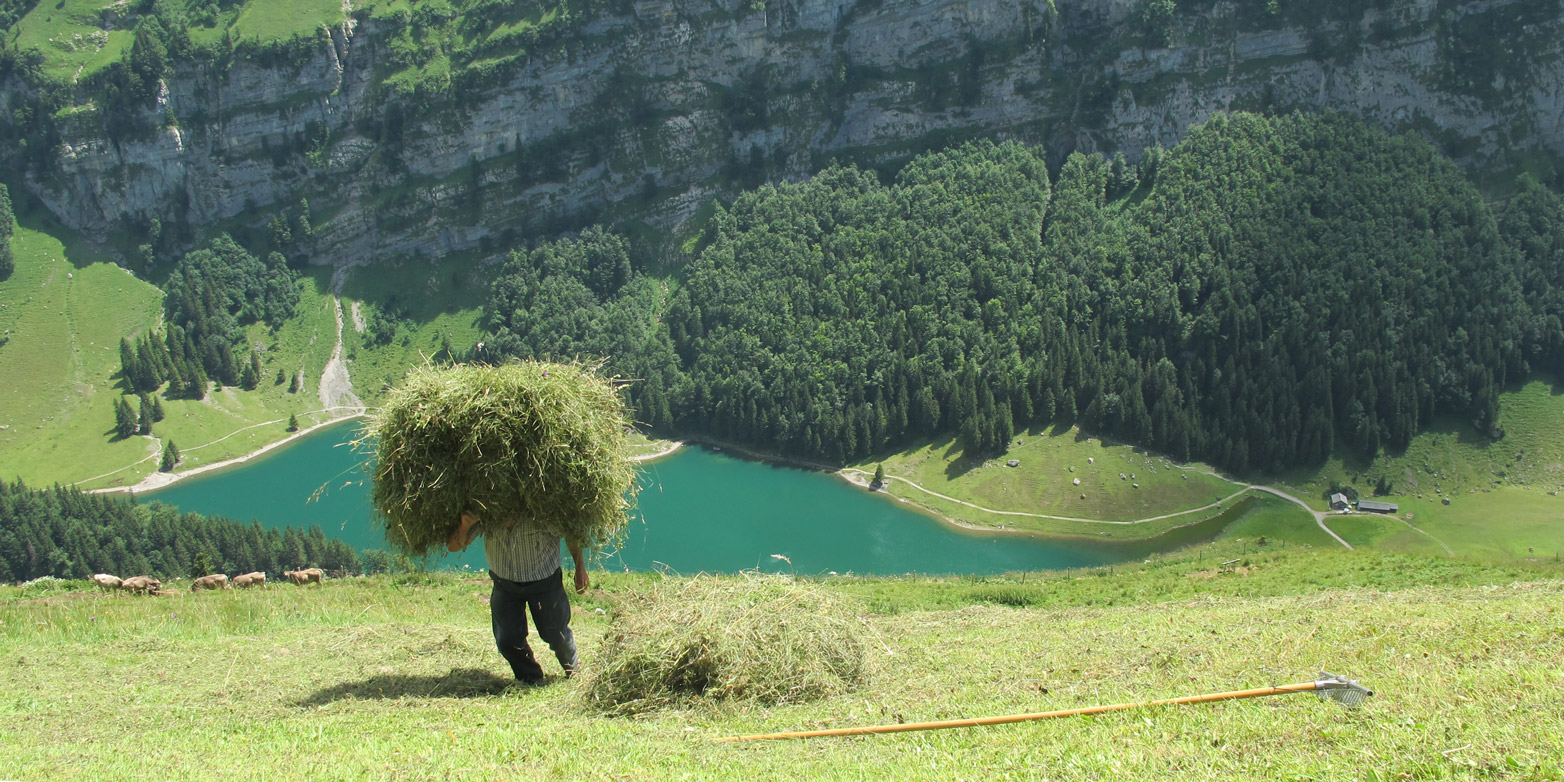If beauty is in the eye of the beholder, how do you define a beautiful landscape? Machine learning algorithms can be helpful here, says Adrienne Grêt-Regamey.

Few people know that Switzerland has to record, describe and evaluate its various landscapes and their qualities1. And once the stocktake is completed, landscape quality objectives (LQOs) must be formulated - for example, which landscapes and which features should we preserve and promote? To provide a basis for this, the Swiss Foundation for Landscape Conservation has drawn up a catalogue of characteristic cultural landscapes2.

The catalogue covers 39 different landscape types, which differ in their usage, function and natural conditions. One example here are the remote, difficult to access pastures known as "Wildheulandschaften" on the steep sides of the Muota Valley. Although hardly worth the effort and expense of farming, the centuries-old tradition of alpine hay making is practised here. The area is a haven for species that have become rare, and a vital part of the Swiss sense of homeland.
All the landscapes listed are very diverse, have been shaped by humans in very different ways and have completely different qualities. Such a catalogue can also be used to formulate development objectives tailored to the specific landscapes, which can be assessed at a later stage.
Everyone finds the green Alps beautiful
But how do I determine the qualities of a landscape? Isn't quality in the eye of the beholder? No, not exclusively. There's a common understanding that is widely accepted across cultures. People from very different origins, for example, highly value the same diverse, structured landscapes. In our view, this consensus should also be implementable in computer-based algorithms.
"If we combine qualitative and quantitative information, we can improve the delineation of widely accepted landscape typologies." Adrienne Grêt-Regamey
So we fed machine learning algorithms with spatial data. The algorithms recognised spatial clusters - computer-generated typical landscape categories. We then compared and combined these with expert-based surveys. In the process, we were able to identify new, dynamic boundaries between landscape types - information that helped to cartographically delineate the individual units. If we combine qualitative and quantitative information, we can improve the delineation of widely accepted landscape typologies. It's a more meaningful result because subjective expert assessments play less of a role, without leaving the whole process to the algorithms and shifting it to a "black box".
Typically Schwyz
In this way, we were able to develop a comprehensive typology of the landscapes of the canton of Schwyz3. In a second step, we defined key cantonal areas - landscape areas considered particularly valuable and beautiful. Here we relied both on expert opinions and the contributions of nature to people, so-called ecosystem services - food production, groundwater recharge, drinking water filtration, ecological connectivity, recreational open spaces and quiet areas.
The Schwyz landscape is unique, and an important asset of the canton. With a comprehensive landscape typology, we spatially represent these values and show how they can be preserved in the long term. This provides the canton with a spatial planning tool for maintaining and promoting its landscape capital. In practical terms, this means that measures will be drawn up to ensure the wild haymaking landscapes of the Muota Valley are preserved as an essential element of the Schwyz landscape. The combination of qualitative and quantitative, expert-based and computer-aided methods has proved a successful approach to making landscape diversity tangible and developing its cultural-historical and identity-forming values.
References
1Council of Europe (2000): European Landscape Convention (called for on 29.03.2019).
2 Rodewald, R., Schwyzer, Y., Liechti, K. (2014). Katalog der charakteristischen Kulturlandschaften der Schweiz. Grundlage zur Ermittlung von Landschaftsentwicklungszielen. Bern: Stiftung Landschaftsschutz Schweiz.
3 Rodewald, R., Weibel, B. Schneider, S., Grêt-Regamey, A. (2019): Eine neue Landschaftstypologie zur Sicherung der Landschaftsqualität. Zurich: ETH Zürich, Planung von Landschaft und urbanen Systemen, 2019. DOI: 10.3929/ethz-b-000344277
4 Meier C., Bucher A. (2010): Die zukünftige Landschaft erinnern. Eine Fallstudie zu Landschaft, Landschaftsbewusstsein und landschaftlicher Identität in Glarus Süd. Zürich, Bristol-Stiftung; Hauptverlag. Bern, Stuttgart, Wien.






